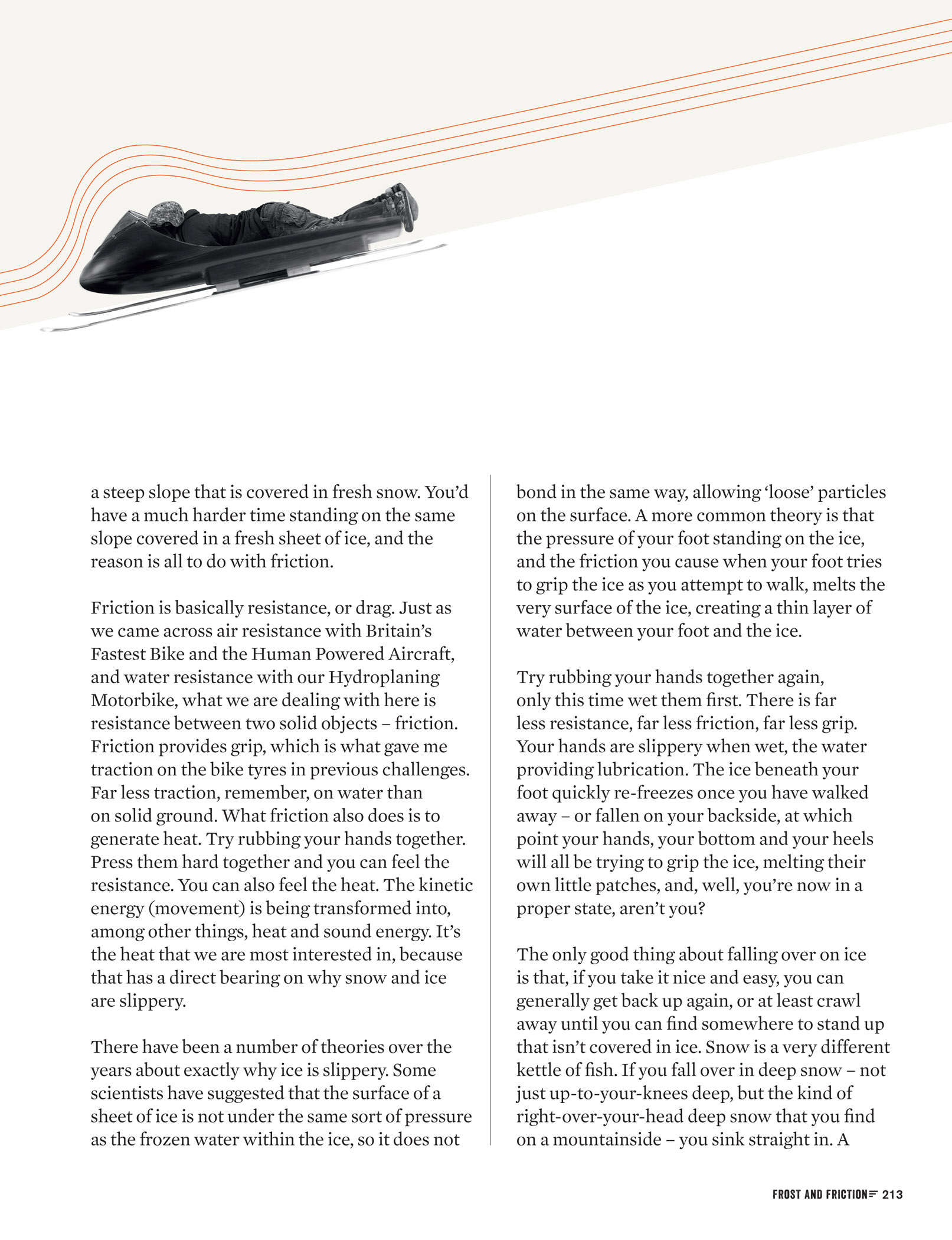
a steep slope that is covered in fresh snow. You’d
have a much harder time standing on the same
slope covered in a fresh sheet of ice, and the
reason is all to do with friction.
Friction is basically resistance, or drag. Just as
we came across air resistance with Britain’s
Fastest Bike and the Human Powered Aircraft,
and water resistance with our Hydroplaning
Motorbike, what we are dealing with here is
resistance between two solid objects – friction.
Friction provides grip, which is what gave me
traction on the bike tyres in previous challenges.
Far less traction, remember, on water than
on solid ground. What friction also does is to
generate heat. Try rubbing your hands together.
Press them hard together and you can feel the
resistance. You can also feel the heat. The kinetic
energy (movement) is being transformed into,
among other things, heat and sound energy. It’s
the heat that we are most interested in, because
that has a direct bearing on why snow and ice
are slippery.
There have been a number of theories over the
years about exactly why ice is slippery. Some
scientists have suggested that the surface of a
sheet of ice is not under the same sort of pressure
as the frozen water within the ice, so it does not
bond in the same way, allowing ‘loose’ particles
on the surface. A more common theory is that
the pressure of your foot standing on the ice,
and the friction you cause when your foot tries
to grip the ice as you attempt to walk, melts the
very surface of the ice, creating a thin layer of
water between your foot and the ice.
Try rubbing your hands together again,
only this time wet them first. There is far
less resistance, far less friction, far less grip.
Your hands are slippery when wet, the water
providing lubrication. The ice beneath your
foot quickly re-freezes once you have walked
away – or fallen on your backside, at which
point your hands, your bottom and your heels
will all be trying to grip the ice, melting their
own little patches, and, well, you’re now in a
proper state, aren’t you?
The only good thing about falling over on ice
is that, if you take it nice and easy, you can
generally get back up again, or at least crawl
away until you can find somewhere to stand up
that isn’t covered in ice. Snow is a very different
kettle of fish. If you fall over in deep snow – not
just up-to-your-knees deep, but the kind of
right-over-your-head deep snow that you find
on a mountainside – you sink straight in. A
FROST AND FRICTION 213